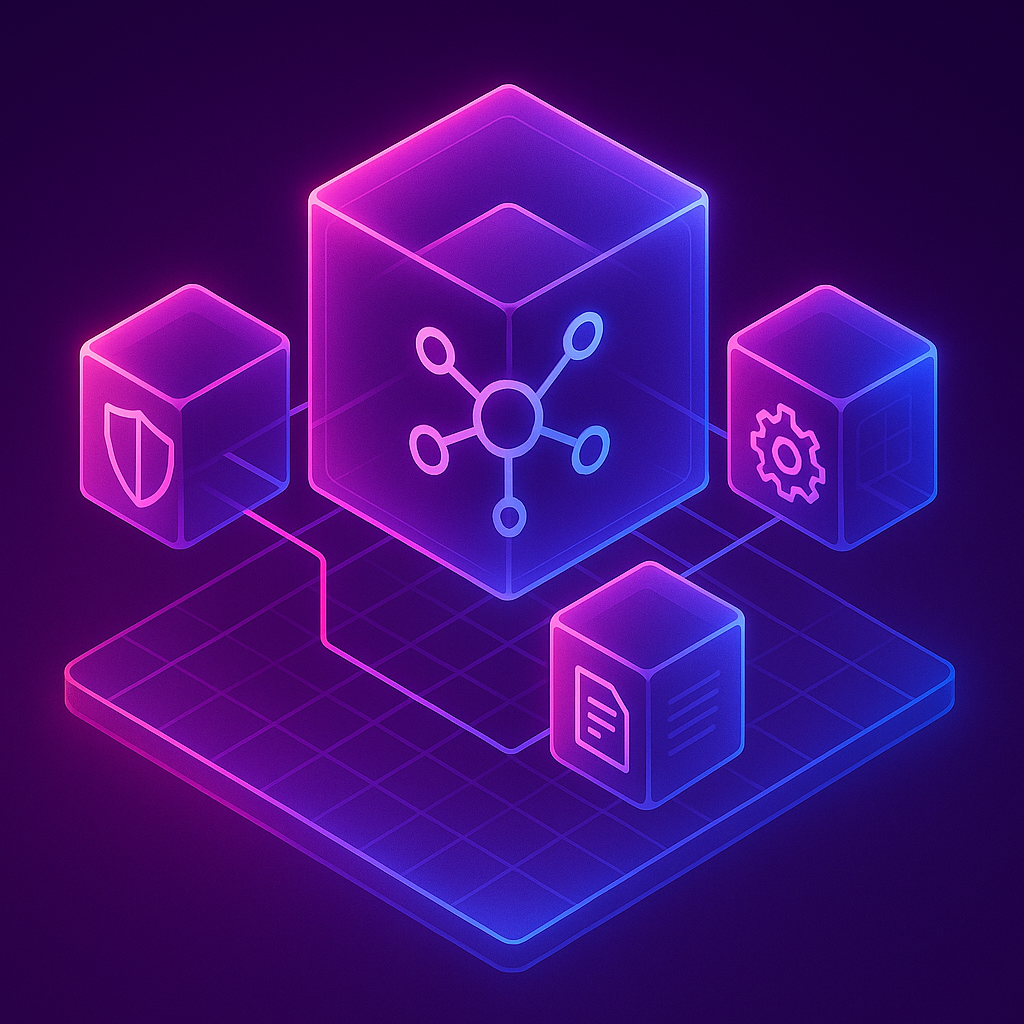How does a fortress stay safe when the doors, walls, and gates are constantly moving? Traditional network defenses crumble under today’s dynamic workloads—where applications shift between cloud, edge, and on-premise environments. Enter microsegmentation with a modular architecture: it transforms rigid security perimeters into flexible, component-driven defenses, unlocking Zero Trust, scalability, and agility. But how exactly do these modules work together—and where could they fail?
Demystifying Microsegmentation’s Modular Core
Microsegmentation isn’t a monolithic appliance. It’s a composite of interoperating modules, each responsible for a layer of control. Understanding these modules is key to deploying effective, future-proof defenses.
Module Breakdown Table
Module | Purpose | Key Functions | Owners |
Visibility & Mapping | Reveal real communication paths | Traffic discovery, identity mapping | SecOps, Network Ops |
Policy Engine | Define access controls | Rule creation, context validation | Security architects |
Orchestration Layer | Deploy policies uniformly | API calls to enforcement points | Cloud/SysOps, DevOps |
Enforcement Points | Enforce the rules | Host agents, hypervisors, SDN switches | Infrastructure teams |
Monitoring, Analytics & Feedback | Observe, alert, refine | SIEM, telemetry, policy tuning | SOC, Threat Intel |
Think of the setup like a factory assembly line: each station has a discrete purpose, but coordinated execution ensures a polished final product—network security.
Module 1 – Visibility & Mapping
What it Does:
This module discovers real-time application connections, user/device identities, and traffic patterns. Without accurate mapping, policy design is guesswork.
Components:
- Software agents for endpoints and VMs
- Flow collectors on network taps or switches
- Identity data from DirServices (e.g., AD, LDAP, Okta)
- Analytics engines for blast radius and risk modeling
Process Flowchart:
Raw Packet & Flow Data
↓
Metadata Collection (Identity, App labels)
↓
Workload Communication Graph
↓
Anomaly Score & Risk Map → Feeding Policy Engine
Challenges:
- Blind spots from unmanaged workloads
- Agent resource consumption
- Identity data accuracy and freshness
Module 2 – Policy Engine
Purpose:
Translate visibility maps into enforceable, context-aware rules.
Capabilities:
- Support for identity-based, application-level, time-based, and device posture conditions
- Rule authoring GUIs and CLI/DSL interfaces
- Policy simulation before deployment
Modular Features Table
Feature | Benefit | Ideal For |
Identity-based Rules | Aligns security with users/apps | Cloud-native apps |
Temporal Controls | Time-restricted access | R&D windows |
Simulation Engine | Safe policy testing | Compliance-critical systems |
Best Practices:
- Version-controlled policies via Git
- Role-based access for policy workflows
- Automate clean-up of stale rules
Module 3 – Orchestration Layer
Functionality:
Acts as central command—taking high-level policies and deploying them to diverse environments (public clouds, private clouds, on-prem, containers).
Supports:
- AWS/Azure/GCP security groups and APIs
- VMware NSX, Cisco ACI, OpenStack
- Kubernetes network policies, Istio
Orchestration Flow:
Policy Engine → Orchestration → Environment-specific API Calls → Enforcement points update
Edge Cases:
- API rate limits
- Incomplete compliance
- Deployment delays
Recommendation:
Implement CI/CD pipelines with policy-as-code and automated testing.
Module 4 – Enforcement Points
Types:
- Host agents (Linux, Windows, containers)
- Hypervisor-level (e.g., VMware NSX)
- Network-level (SDN switches or NCR overlay)
Responsibilities:
- Enforce per-connection rules
- Provide local logging
- Ensure high performance
Enforcement Comparison Table
Enforcement Type | Context Support | Scalability | Overhead |
Host Agent | User, device, app | High resolution | Moderate CPU |
Hypervisor | VM-to-VM only | Centralized | Minimal |
SDN | Coarse-grained | Controller-dependent | Low latency |
Considerations:
- Agent compatibility
- Load and resource management
- Secure channel to orchestration
Module 5 – Monitoring, Analytics & Feedback
Role:
Transform logs into action—detect anomalies, tune policies, trigger responses.
System Flow:
Logs → SIEM/XDR → Rule Violation Alerts → SOC Investigation → Feedback Loop → Policy Engine
Critical Data Points:
- Blocked flow rates
- False positive/negative ratios
- Policy drift trends
- Lateral movement attempts
Best Practices:
- Centralized policy telemetry
- Automated feedback (e.g., auto-tune, divergence alerts)
- Regular dashboards & audit summaries
Interdependencies and Synergies
Modules are tightly coupled—upgrades or gaps in one affect all others. Visibility feeds enforcement; policy engines rely on accurate feedback. Here’s a simplified dependency flow:
Visibility → Policy Engine ↔ Orchestration → Enforcement → Monitoring → (back to) Policy Engine
Risk Amplification Table
Failed Module | Impact on the Chain |
Visibility | No data → No rules |
Policy Engine | Dangerous or no controls |
Orchestration | Uneven enforcement |
Enforcement | Unprotected perimeter |
Monitoring | No detection or improvement |
Deployment Lifecycle—Modular Approach
A phased deployment ensures manageability and ROI.
1. Pilot (Small subset)
- Objectives: Test agents, evaluate mapping accuracy
- Modules: Visibility + Policy Engine
2. Expansion (Full environment)
- Goals: Scale enforcement, make enforcement agent-native
- Add: Orchestration, Enforcement Points
3. Optimization
- Refine policy tuning, auto-clean policies
- Integrate monitoring and feedback loops
4. Maintenance & Evolution
- Agile updates
- Modular upgrades
- Extend to new platforms (edge, IoT)
Step 9: Real-World Failure Modes
- Agent Fragmentation
- Hosts missing the agent leave blind spots
- Hosts missing the agent leave blind spots
- Policy Drift
- Environments diverge; no self-auditing
- Environments diverge; no self-auditing
- Enforcement Silos
- Cloud vs. on-prem mismatch in rule application
- Cloud vs. on-prem mismatch in rule application
- Monitoring Gaps
- Lack of correlation between modules → long detection times
- Lack of correlation between modules → long detection times
The Business Case for Modular Microsegmentation
ROI Matrix
Benefit | Explanation | Impact |
Risk Reduction | Granular controls limit blast radius | Decrease in breach severity |
Regulatory Alignment | Documented policy, traceability | Faster audits |
Operational Agility | CI/CD for security | Faster feature rollout |
Cost Control | Phased investment per module | Avoid overbuying upfront |
Enabling Zero Trust Through Modularity
- Identity-first Policies (Not IP-based)
- Adaptive Defence through modular scaling
- Cloud-Native Ready by supporting diverse infra
- Continuous Compliance via telemetry and rules lifecycle
Future Innovations & Open Questions
- Standard-based orchestration: Will open APIs unify cloud and on-prem?
- Edge & IoT modules: How to enforce in the agent-limited edge environment?
- Inter-segment collaboration: How to share identity/context securely across orgs?
Before You Deploy: Ask the Right Zero Trust Questions
Microsegmentation is often positioned as a core enabler of Zero Trust—but its success depends heavily on how well foundational decisions are made early on. Organizations that skip this step often end up with fragmented policies, inconsistent enforcement, or brittle architectures that don’t scale. That’s why it’s essential to ask the right Zero Trust questions up front—questions about identity context, segmentation logic, policy orchestration, and telemetry integration. These considerations shape whether microsegmentation will become a strategic advantage—or just another layer of operational complexity.
How Microsegmentation Works (And Why Modular Design Matters)
At its core, microsegmentation works by breaking your network into smaller, tightly controlled segments that enforce least-privilege access at every level. But the real magic happens when this is done through a modular architecture—where each component (visibility, policy, enforcement, monitoring) works in sync. Instead of relying on one centralized system to manage everything, microsegmentation distributes intelligence and control, enabling scalability, agility, and better risk isolation. With well-placed enforcement points and continuous feedback, microsegmentation becomes an adaptive security fabric that aligns with cloud-native and Zero Trust principles.
TL;DR Box – Key Takeaways
Microsegmentation is best delivered as a set of integrated modules—visibility, policy, orchestration, enforcement, and analytics.
Modularity enables agile adoption, scalable roll-out, and phased investment.
The architecture only works if feed-forward (data flow) and feedback loops are maintained.
Without strong orchestration, monitoring, and visibility, the system degenerates into random, brittle rules.





